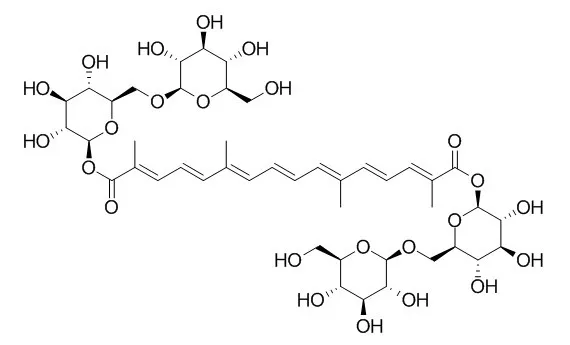| Abstract
Depression is the leading cause of mental health-related disease globally, and it affects an estimated 300 million people worldwide. However, its physiological causes are not fully understood. Since available antidepressants fail to achieve complete disease remission, treating diversification of depression may be a useful contribution. Crocin, one of the main glycosylated carotenoids of saffron, has been found to have numerous pharmacological activities and has been reported to be associated with neuroprotective effects. However, the biological action of crocin-I, a major member of the crocin family, on depression-like behavior, neuroinflammation and oxidative damage in depressed animals remains unclear. The present study showed that crocin-I exerts significant antidepressant effects in a model of chronic corticosterone (CORT)-induced depression, as evidenced by the attenuation of depression-like behaviors in the open field test, forced swimming test and tail suspension test. The antidepressant activity of crocin-I was probably achieved through the suppression of neuroinflammation (IL-1β) and oxidative stress in the mouse hippocampus. Additionally, the oral administration of crocin-I at a dose of 40 mg/kg reduced the CORT-induced accumulation of nicotinamide in the liver of the mice to improve the synthesis of NAD+, thereby stimulating the activity of SIRT3 deacetylase to elevate the activity of antioxidants such as superoxide dismutase 2 and glutathione reductase. Moreover, crocin-I reduced the levels of oxidative damage markers (reactive oxygen species and malonaldehyde) to rescue impaired mitochondrial function caused by CORT treatment, which was represented by electron transport chain and oxidative phosphorylation normality, and thus rescue ATP production to the level of that in wild-type mice. Our findings shed new light on the mechanism of action of crocin-I on depression-like behavior and oxidative stress in individuals stressed by perceived conditions.
Keywords: Corticosterone; Crocin-I; Depression; Mitochondria; Neuroinflammation; Oxidative damage. |






 Cell. 2018 Jan 11;172(1-2):249-261.e12. doi: 10.1016/j.cell.2017.12.019.IF=36.216(2019)
Cell. 2018 Jan 11;172(1-2):249-261.e12. doi: 10.1016/j.cell.2017.12.019.IF=36.216(2019) Cell Metab. 2020 Mar 3;31(3):534-548.e5. doi: 10.1016/j.cmet.2020.01.002.IF=22.415(2019)
Cell Metab. 2020 Mar 3;31(3):534-548.e5. doi: 10.1016/j.cmet.2020.01.002.IF=22.415(2019) Mol Cell. 2017 Nov 16;68(4):673-685.e6. doi: 10.1016/j.molcel.2017.10.022.IF=14.548(2019)
Mol Cell. 2017 Nov 16;68(4):673-685.e6. doi: 10.1016/j.molcel.2017.10.022.IF=14.548(2019)